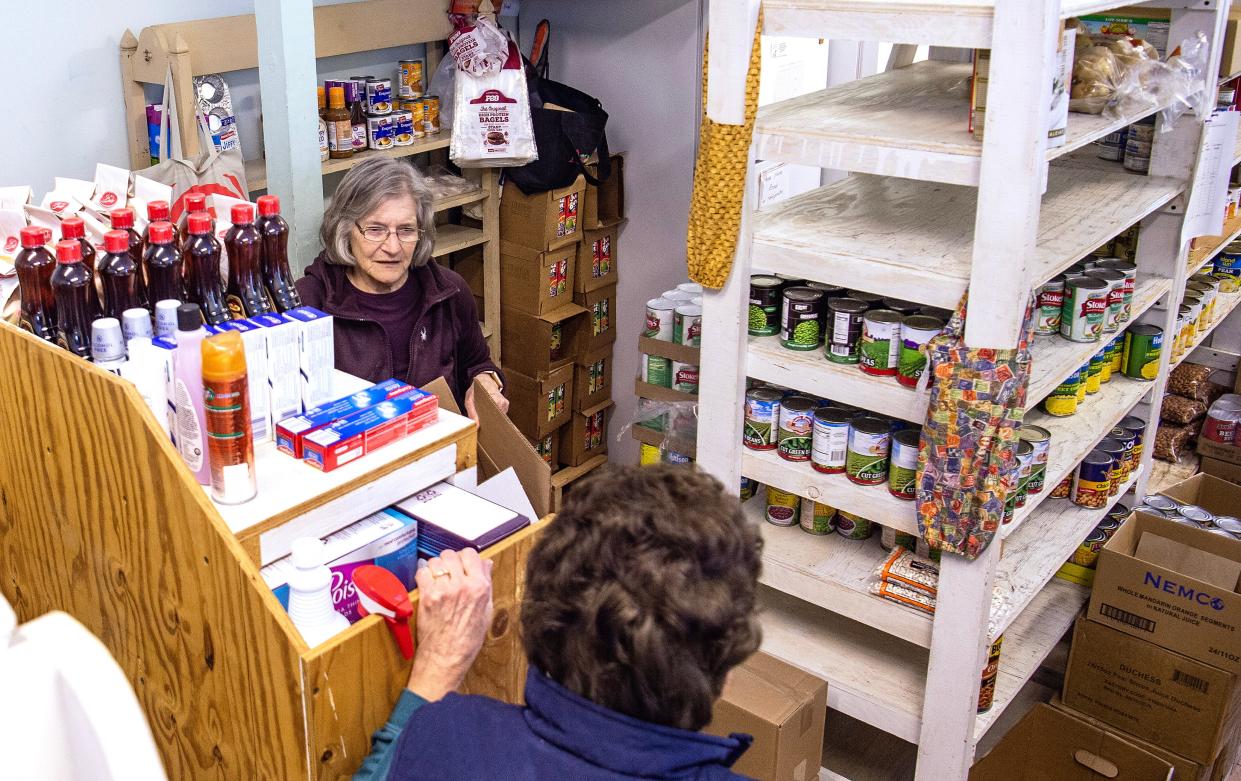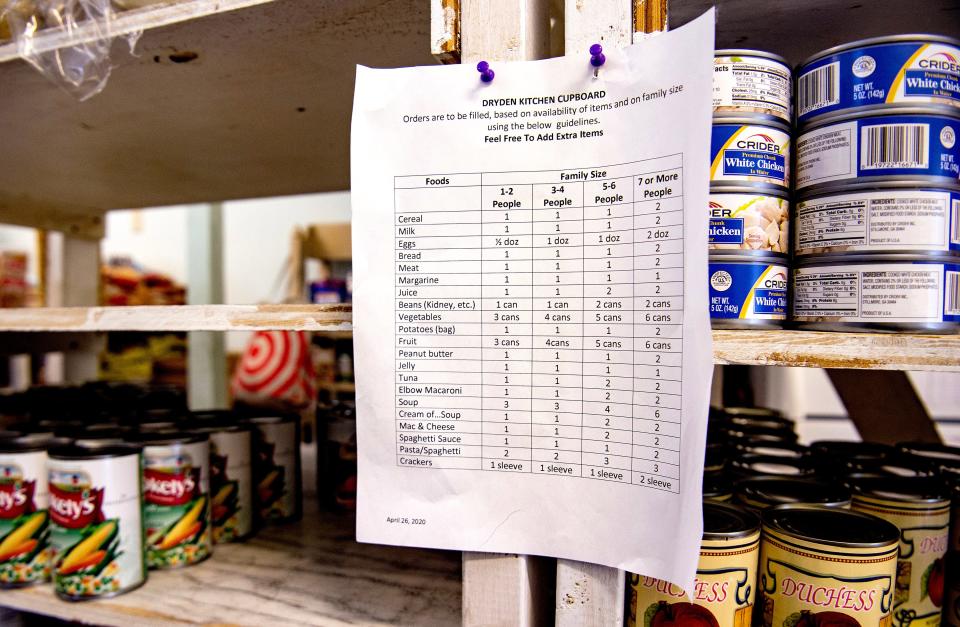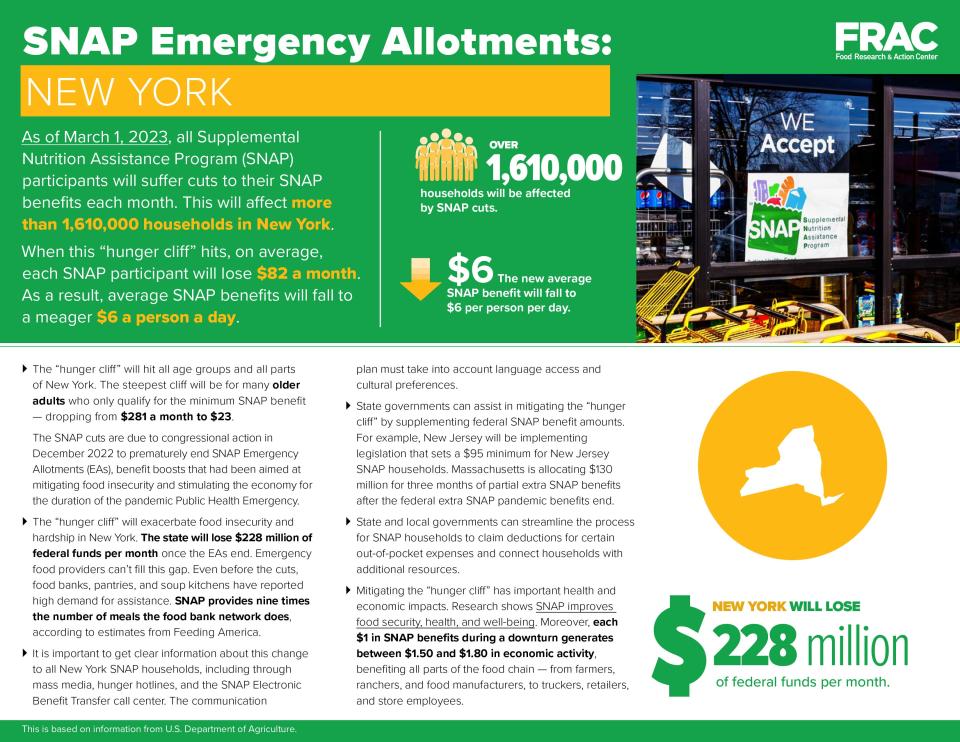As SNAP Emergency Allotment benefits end, local food banks prepare for 'hunger cliff'

More than 1.6 million households across New York State will lose the Supplemental Nutrition Assistance Program (SNAP) Emergency Allotments (EAs) at the end of February that provided extra money for food since the start of the COVID pandemic in 2020.
Every SNAP household will see at least $95 a month less, but some will see reductions of $250 a month or more, according to the nonpartisan research and policy institute Center on Budget and Policy Priorities.
The average person will receive about $90 a month less in SNAP benefits, it said.
According to the Food Research & Action Center (FRAC), older adults will be hardest hit by the cuts, with seniors who qualify for only the minimum SNAP benefits seeing their benefits slashed from $281 to a mere $23 per month.
“Food insecurity is spiking,” said Randi Quackenbush, vice president of Community Impact for Food Bank of the Southern Tier. “We’ve been calling it the ‘hunger cliff.’”
SNAP benefits were not adequate before the pandemic, said Quackenbush. However, the Families First Coronavirus Act, signed in March 2020, helped combat food insecurity levels with additional benefits for households receiving SNAP.
More:SNAP benefits in 2023 to end extra cash for food benefits provided during the pandemic
The increased EA benefits were the difference between the benefit the household would normally receive and maximum for the household’s size. For households already receiving maximum benefits, the SNAP EA benefits were raised by $95.
“When pandemic began, food insecurity was really highlighted. Everyone saw the pictures of the cars lined up,” said Quackenbush. “We had lots of donations and the government was stepping up.”
The additional SNAP EA benefits, along with universal meals for all students, helped curb hunger. In 2021, food insecurity levels decreased, said Quackenbush.
"But one by one those benefits are slipping away," she said.
Where to find food

To combat the loss of SNAP EA and universal meals, the Food Bank of the Southern Tier is adding approximately 300 family slots to its Mobile Food Pantries. The Mobile Food Pantries deliver fresh produce, dairy and other foods to designated locations and require participants to pre-register.
The demand for the program is high, so the Food Bank encourages people to utilize local community food pantries and free meals. The bulk of the Food Bank’s distribution is through the local pantries, which also give clients more choice.
"We all need some help sometimes and going to a food pantry is an option," said Quackenbush.
Tompkins County has what Quackenbush called a “very, very robust food distribution network."
In Ithaca, free food options include the Ithaca Kitchen Cupboard at Salvation Army, Southside Community Center, St. John’s Community Services, Immaculate Conception Church Food Pantry, YMCA Food Pantry, Tompkins Community Action Pantry, Overlook Apartments, West Village Apartments, and Loaves and Fishes.
In addition to the multiple pantries and meal programs in Ithaca, Tompkins County also has pantries in most communities, including Enfield, Trumansburg, Newfield, Groton, Danby, Freeville, Lansing, McLean, Caroline, and Dryden. The Enfield food pantry is one of the Food Bank's biggest distribution sites and is open several days per week.
While some of the programs may require residency status, Quackenbush said all Food Bank partner agencies have a "serve and refer policy."
"Even if you're not eligible by their standards, they're required to serve you," said Quackenbush, "Then they would refer you to a place that is closer to your home."
Do a SNAP benefit check up

In Tioga County, Catholic Charities of Tompkins /Tioga is "gearing up to help support with more food due to the decrease in SNAP benefits," said Michaela Cortright, deputy director and Samaritan Center director. The organization has applied for more funding for Tioga County and recently hired a cook to provide free meals four days per week.
In the organization's Tompkins County office, there are currently no funding plans for additional food sources, but they have been in touch with Friendship Donation Network about possibly hosting a small on-site pop-up pantry at the newly completed Founders Way apartment complex.
Cortright urges all SNAP recipients to do a "benefit check up," as employment loss or certain household costs could result in more SNAP benefits. Expenses which may affect benefits include increased housing (rent, mortgage, home equity loan, property/school taxes; and/or homeowners Insurance), increased childcare or childcare costs, and medical expenses above $35 for senior or disabled households.
Any changes in household expenses should be reported to local SNAP offices or online. Additionally, Hunger Solutions New York provides an online SNAP Benefits Estimator tool.
Tompkins residents in need of food assistance should visit The Human Service Coalition of Tompkins County website for calendar and maps listings of food resource or call 2-1-1. Feeding New York State also provides a county by county list of food pantry locators.
'If anyone needs food, we give them food'
The Dryden Kitchen Cupboard is so small that only two volunteers can stand inside but it's filled with food. Located in a converted garage behind Dryden Presbyterian Church on North St., the pantry is open from 11 a.m. until noon every Monday and Friday, 5 - 6 p.m. on Wednesdays, and on the last Saturday of the month from 11 a.m. until noon.
Some of the non-perishables the Kitchen Cupboard gives away are collected by schools and organization, while in the summer and fall, local gardeners will often donate excess produce to the pantry. But most of the food for the Dryden Kitchen Cupboard is supplied by the Food Bank of the Southern Tier, said volunteer Ione Worth.
Worth said that while some pantries may only be permitted to serve residents of the community, the Dryden Kitchen Cupboard is open to anyone.
“If anyone needs food, we give them food. It doesn't matter if they live in Cortland or wherever,” said Worth. “If people are willing to stand outside in all kinds of weather, they really need the food."
Cornell:Oneida Indian Nation ancestral remains returned after six decades in Cornell archive
For subscribers:At 11, his only future was as a soldier. Now he's fighting to save the environment
Cannabis:Cannabis dispensary opening at former Trader K's on the Ithaca Commons
Follow Kate Collins on Twitter: @kcollins213. To get unlimited access to the latest news, please subscribe or activate your digital account today.
This article originally appeared on Ithaca Journal: As SNAP EA benefits end, local food banks ready for 'hunger cliff'

